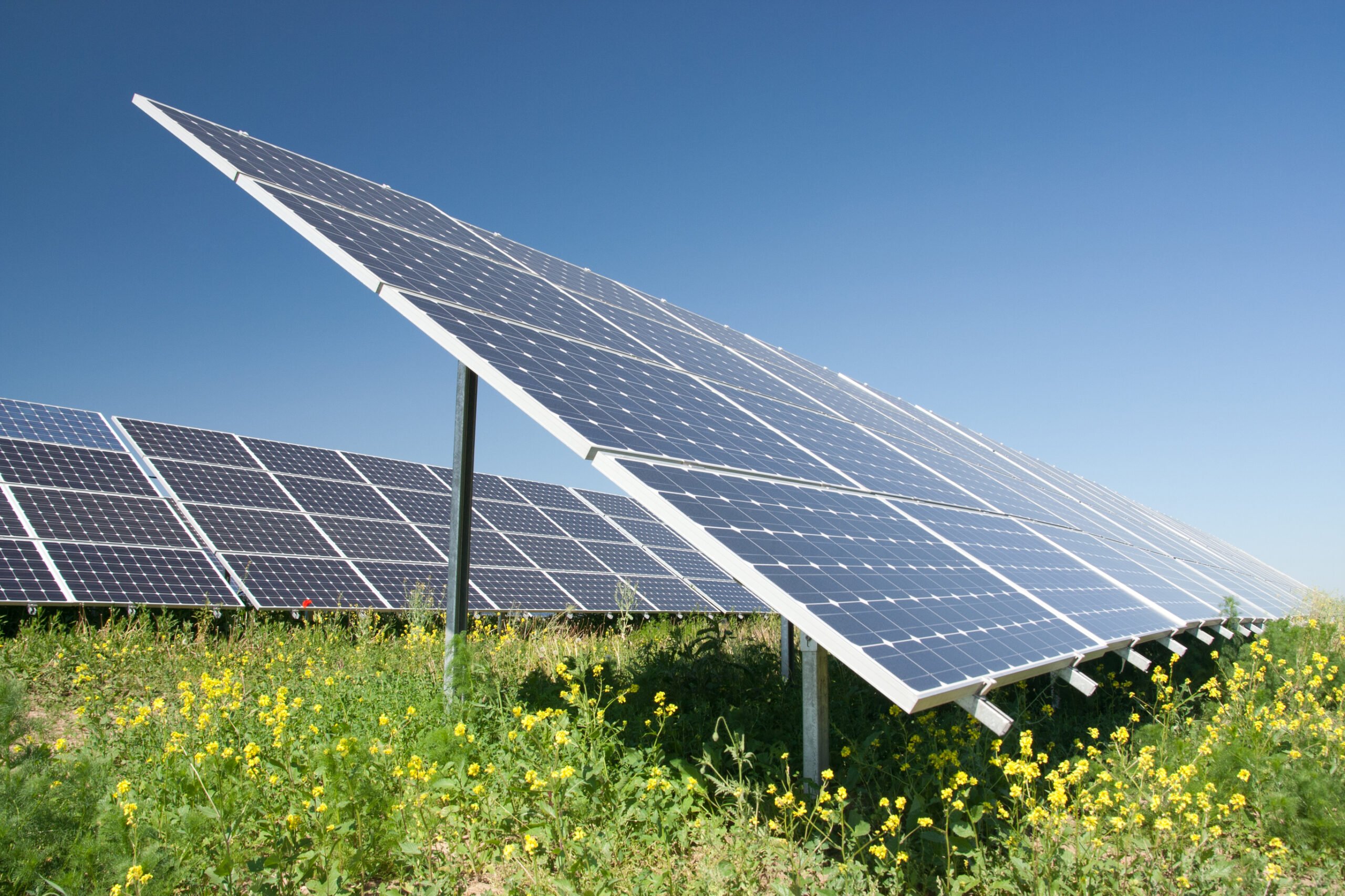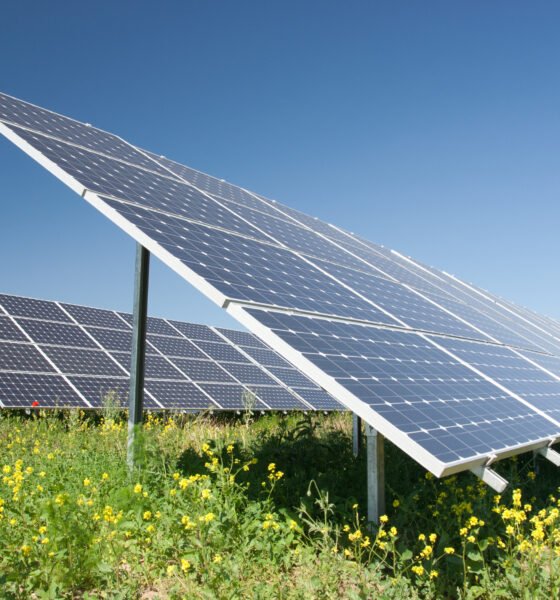

Energy
Comparing Renewable Energy: Solar Power, Wind, Hydro & Bio
More and more people believe sustainability needs to be a priority these days. One recent poll showed that 78% of American consumers feel it is important. They are taking new steps to put their money where their mouth is, which includes investing in renewable energy.
As the world increasingly turns its attention to sustainable living and combating climate change, renewable energy sources have taken center stage. These clean, inexhaustible power sources are key to reducing our carbon footprint and achieving environmental goals. Among them, solar, wind, hydro, and biomass energies are leading the way. Each of these sources offers unique benefits and faces distinct challenges. In this blog, we’ll dive into the specifics of solar power compared to wind, hydro, and biomass energies, shedding light on how each contributes to our sustainable future.
Understanding Renewable Energy
Renewable energy, harnessed from natural processes like sunlight, wind, water flow, and organic material, offers an endless supply of power without depleting the Earth’s resources. Unlike fossil fuels, which contribute to climate change and have a finite supply, renewables provide a cleaner, more sustainable energy solution. They not only reduce greenhouse gas emissions but also promote energy security and economic growth through job creation in new technologies. The diversity of renewable energy sources allows for tailored solutions based on geographic and climatic conditions, highlighting the need for a comprehensive approach to our energy future. As we explore solar, wind, hydro, and biomass energies, understanding their unique benefits and challenges is crucial for advancing towards a sustainable, resilient energy system.
- Solar Power
- Solar energy shines as a beacon of sustainability, harnessing the sun’s abundant power to generate electricity. This technology captures sunlight using photovoltaic (PV) panels or solar thermal systems, converting it into usable energy for homes, businesses, and industries. The beauty of solar power lies in its simplicity and the ubiquity of its source—the sun.
Advantages of Solar Power
- Abundance: The sun provides a nearly limitless source of energy, shining down across the globe. This universal availability makes solar energy a viable option for nearly any location, from remote rural areas to bustling urban centers.
- Low Operating Costs: Once installed, solar panels require minimal maintenance, leading to low ongoing expenses. The primary cost associated with solar energy is the initial setup, but with technology advancements and increased efficiency, these costs are steadily decreasing.
- Accessibility: Solar power systems can range from small, rooftop installations to large, utility-scale projects, making solar energy accessible for various applications and scales. For those interested in exploring solar options, obtaining solar quotes can provide a clear understanding of potential costs and benefits.
Challenges of Solar Power
- Variability: Solar energy production is directly dependent on sunlight, which can be affected by weather conditions and day length. This variability requires the integration of energy storage systems or backup power sources to ensure a consistent energy supply.
- Space Requirements: Large-scale solar installations require significant land or rooftop space, which can be a limitation in densely populated areas.
- Initial Setup Costs: The upfront cost of purchasing and installing solar panels can be substantial, though government incentives and financing options are available to help mitigate these costs.
- Wind Energy
Wind energy captures the natural power of the wind using turbines, converting kinetic energy into electricity. Wind farms, consisting of multiple turbines, can be found on land or offshore, tapping into the dynamic forces of the atmosphere.
Benefits of Wind Energy
- Efficiency: Wind turbines can convert a large portion of the wind’s energy into electricity making it one of the most efficient renewable energy sources available.
- Decreasing Cost: The cost of wind energy has fallen dramatically in recent years, thanks to technological advancements and economies of scale. This trend makes wind power an increasingly competitive alternative to fossil fuels.
- Large-Scale Production: Wind farms can generate substantial amounts of electricity, suitable for powering entire communities or contributing to a national grid.
Limitations of Wind Energy
- Site Dependence: The efficiency of wind energy depends heavily on location. Areas with consistent, strong winds are required for optimal operation, limiting the suitability of certain regions.
- Impact on Wildlife: Wind turbines have been criticized for their potential impact on birds and bats, though ongoing research and technological improvements aim to minimize these effects.
- Noise and Aesthetic Concerns: The presence of wind turbines can be a point of contention due to noise production and visual impact on landscapes.
- Hydroelectric Power
Hydroelectric power stands as a testament to human ingenuity, capturing the energy of moving water to generate electricity. This renewable energy source utilizes dams or river currents to drive turbines, transforming the kinetic energy of water into usable power. It’s a method that has been harnessed for centuries, modernized to provide a significant portion of the world’s electricity today.
Advantages of Hydroelectric Power
- Reliability: Unlike solar and wind energy, hydroelectric power can produce a consistent and stable energy output, thanks to the controlled flow of water through turbines.
- Storage Capabilities: Some hydroelectric facilities can act as giant batteries, storing excess energy in the form of water in reservoirs. This stored water can be released to generate power as needed, making hydro a flexible energy source in meeting demand fluctuations.
- Low Emissions: Once a hydroelectric complex is constructed, it produces electricity without burning fossil fuels, leading to significantly lower greenhouse gas emissions compared to conventional energy sources.
Drawbacks of Hydroelectric Power
- Environmental Impact: The construction of large dams can have profound impacts on local ecosystems, including altering river flow, disrupting wildlife habitats, and affecting local communities.
- Displacement Issues: Large hydro projects may require the relocation of people living in areas designated for dam construction and water reservoirs, raising ethical and social concerns.
- Geographical Limitations: The feasibility of hydroelectric power is heavily dependent on location, requiring sufficient water flow and suitable terrain for dam construction, limiting its applicability in certain regions.
- Biomass Energy
Biomass energy taps into the power of organic materials, converting plant and waste materials into electricity, heat, or fuel. It encompasses a wide range of materials, including wood, agricultural crops, and even municipal waste, making it a versatile energy source.
Benefits of Biomass
- Versatility: Biomass can be used for heating, electricity generation, and as biofuel for transportation. This adaptability allows it to serve multiple roles in an energy system.
- Use of Waste Materials: Biomass energy provides an opportunity to convert waste into energy, reducing landfill use and turning what would be trash into a valuable resource.
- Carbon Neutrality: When managed sustainably, biomass is considered carbon-neutral. The CO2 released during energy production is roughly equal to the amount absorbed by the plants during their growth, contributing to a balanced carbon cycle.
Challenges of Biomass
- Efficiency Concerns: Compared to other renewable sources, biomass energy conversion can be less efficient, requiring large amounts of material to produce significant energy outputs.
- Competition with Food Production: The use of agricultural crops for energy can compete with food production, potentially driving up food prices and affecting food security.
- Sustainability Questions: While biomass has the potential for carbon neutrality, concerns arise over deforestation, soil erosion, and biodiversity loss associated with biomass cultivation and harvesting practices.
Comparative Analysis
To provide a clearer understanding of how solar power stacks up against wind, hydro, and biomass energies, let’s compare these renewable energy sources across different criteria such as efficiency, environmental impact, cost, and regional suitability.Criteria Solar Power Wind Energy Hydroelectric Power Biomass Energy Efficiency High efficiency in converting sunlight to electricity. High efficiency in areas with strong winds. High efficiency with a consistent water flow. Lower efficiency compared to other renewables. Environmental Impact Minimal, mainly in manufacturing and disposal of panels. Concerns include wildlife impact and noise. Can disrupt ecosystems and displace communities. Carbon neutral but can lead to deforestation. Cost Decreasing costs due to technology improvements. Costs have decreased significantly. Economically viable in windy regions. High initial costs, but low operational costs. Costs vary based on biomass source and technology. Regional Suitability Suitable for most regions, best in sunny areas. Requires areas with consistent wind. Dependent on water availability and terrain. Can be utilized wherever there is a supply of biomass materials.
This table highlights the key aspects of each renewable energy source, offering insights into their suitability for different applications and environments.
Conclusion
The journey toward a sustainable energy future is not a one-size-fits-all path. Solar power, with its broad applicability and rapidly decreasing costs, offers a promising solution for global energy needs, especially in sun-rich areas. Wind energy, efficient and increasingly cost-effective, is best suited for regions with strong, consistent winds. Hydroelectric power provides a reliable energy source in areas with suitable water flow, though it comes with significant environmental considerations. Biomass energy, versatile and capable of utilizing waste, requires careful management to ensure sustainability.
In choosing the right mix of renewable energy sources, factors such as regional characteristics, environmental impact, and economic viability play crucial roles. Each source has its unique advantages and challenges, but together, they hold the key to a cleaner, more sustainable world. Embracing this diversity and investing in renewable technologies will enable us to meet our energy demands while protecting the planet for future generations. The future of energy is not reliant on a single solution but on a harmonious integration of solar, wind, hydro, and biomass energies.


 Environment10 months ago
Environment10 months agoAre Polymer Banknotes: an Eco-Friendly Trend or a Groundswell?

 Environment11 months ago
Environment11 months agoEco-Friendly Home Improvements: Top 7 Upgrades for 2025

 Features9 months ago
Features9 months agoEco-Friendly Cryptocurrencies: Sustainable Investment Choices

 Features10 months ago
Features10 months agoEco-Friendly Crypto Traders Must Find the Right Exchange




























